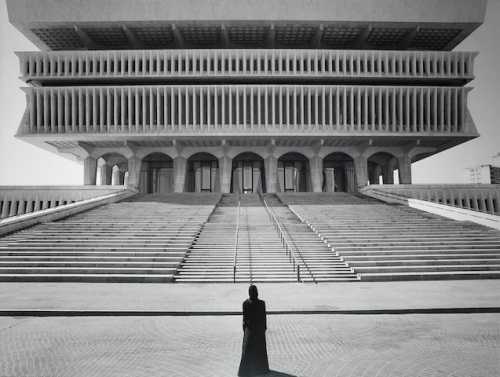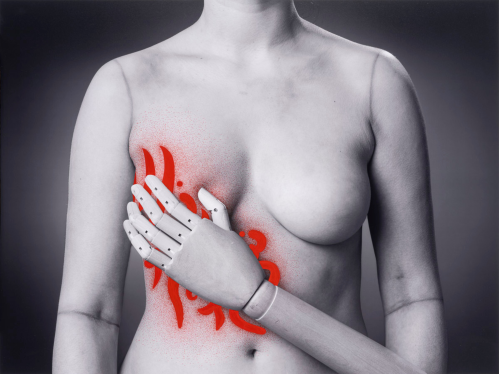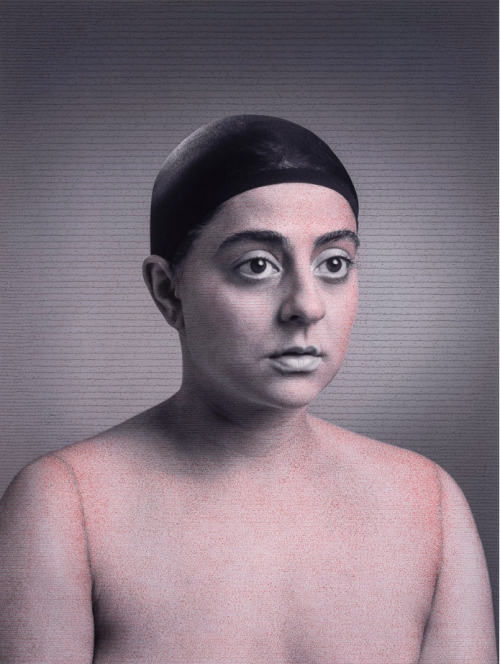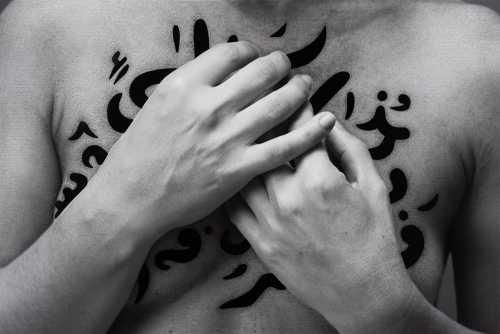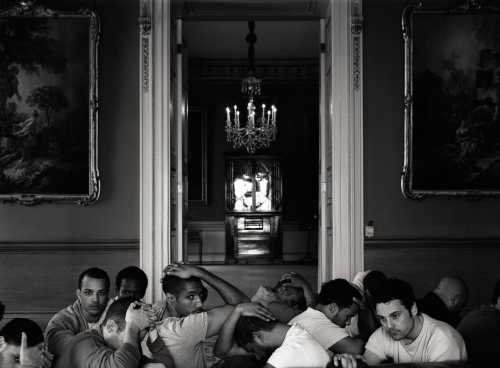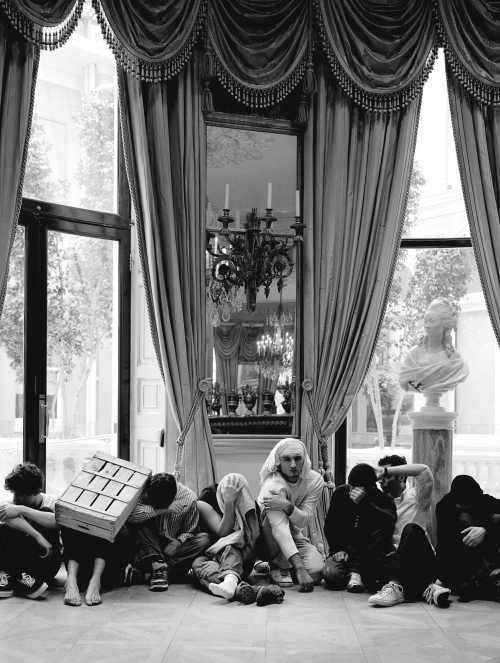- Untitled (from the Soliloquy Series) 1999
- Gelatin Silver Print
- Photography
- 152.4 * 101.6 cm
- Editions: 5
- Edition No. 3
- signed, dated "1999" and inscribed "soliloquy series" on the verso, number 3 from an edition of 5, executed in 1999
Artwork Description
Shirin Neshat's artistic career started from a very personal place. In 1975, Neshat left her hometown of Qazvin to study at the University of California, Berkeley. After almost 20 years of being away, Neshat visited Iran in 1990 deeply saddened and affected by how the Islamic revolution had completely transformed the landscape of her beloved country. In 1993, she produced her first photographic work, the Women of Allah series, which gained her global recognition.
A prominent and incrusted symbol of the Islamic revolution, the chador is a dominant feature in all of Neshat's works, marking the cultural gap between the West and the East, the male and the female and the private versus the public spheres. Her practice challenges preconceptions of Middle Eastern women and addresses the cultural, political and social concerns women face in a contemporary Islamic society.
This hauntingly beautiful black and white still image from the short film installation Soliloquy is captured in front of the Cultural Education Center, a large Brutalist building completed in 1961 as part of the Empire State Plaza in Albany. In this body of work, Neshat uses architecture as a cultural reference as she walks through two distinct landscapes, one in Mardin, Turkey and the other in Albany, New York. The film explores themes of identity, exile and cultural history. Subtly, Neshat renders East and West as cultures in exile from each other but which have distinct parallels and possible points of connection, revealing the beauty and differences within each place. Using dual screenshots facing one another, the mirror effect in Soliloquy allows the viewer to take parallel journeys in two different cultures.
In this photograph Neshat stands on the threshold of two worlds, West and East, modern and traditional, individualistic verses communal. Here, architecture is more than just design; it represents the politics and social strategies of a culture, emphasizing how space and architecture define a society.
A prominent and incrusted symbol of the Islamic revolution, the chador is a dominant feature in all of Neshat's works, marking the cultural gap between the West and the East, the male and the female and the private versus the public spheres. Her practice challenges preconceptions of Middle Eastern women and addresses the cultural, political and social concerns women face in a contemporary Islamic society.
This hauntingly beautiful black and white still image from the short film installation Soliloquy is captured in front of the Cultural Education Center, a large Brutalist building completed in 1961 as part of the Empire State Plaza in Albany. In this body of work, Neshat uses architecture as a cultural reference as she walks through two distinct landscapes, one in Mardin, Turkey and the other in Albany, New York. The film explores themes of identity, exile and cultural history. Subtly, Neshat renders East and West as cultures in exile from each other but which have distinct parallels and possible points of connection, revealing the beauty and differences within each place. Using dual screenshots facing one another, the mirror effect in Soliloquy allows the viewer to take parallel journeys in two different cultures.
In this photograph Neshat stands on the threshold of two worlds, West and East, modern and traditional, individualistic verses communal. Here, architecture is more than just design; it represents the politics and social strategies of a culture, emphasizing how space and architecture define a society.
Realized Price
25,722 USD
Min Estimate
15,151 USD
Max Estimate
21,818 USD
Average Artwork Worth
+49.467%
Average Growth of Artwork Worth
Sales Performance Against Estimates
Average & Median Sold Lot Value
2021 - 2025
Performance vs. Estimate
2021 - 2025
Sell-through Rate
2021 - 2025
